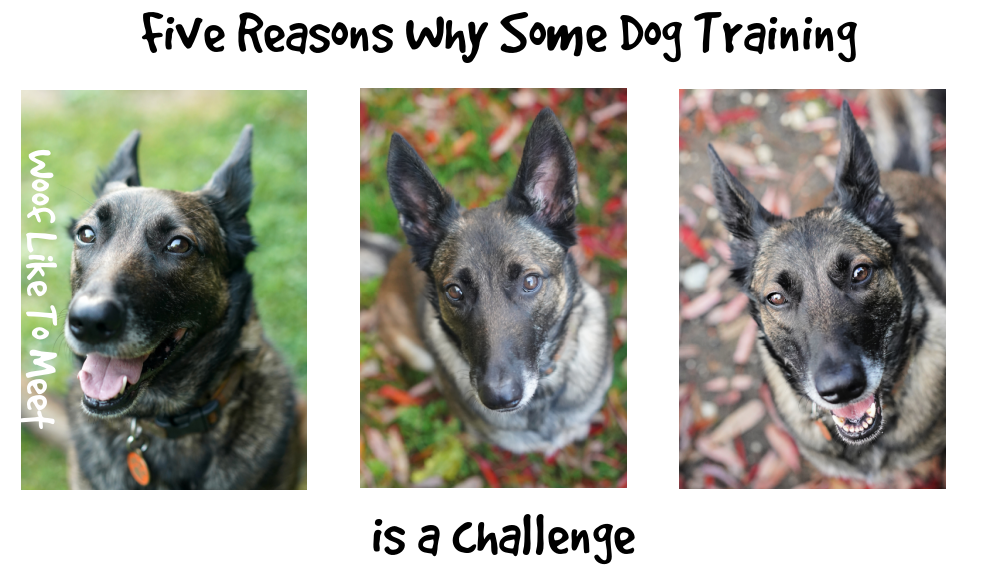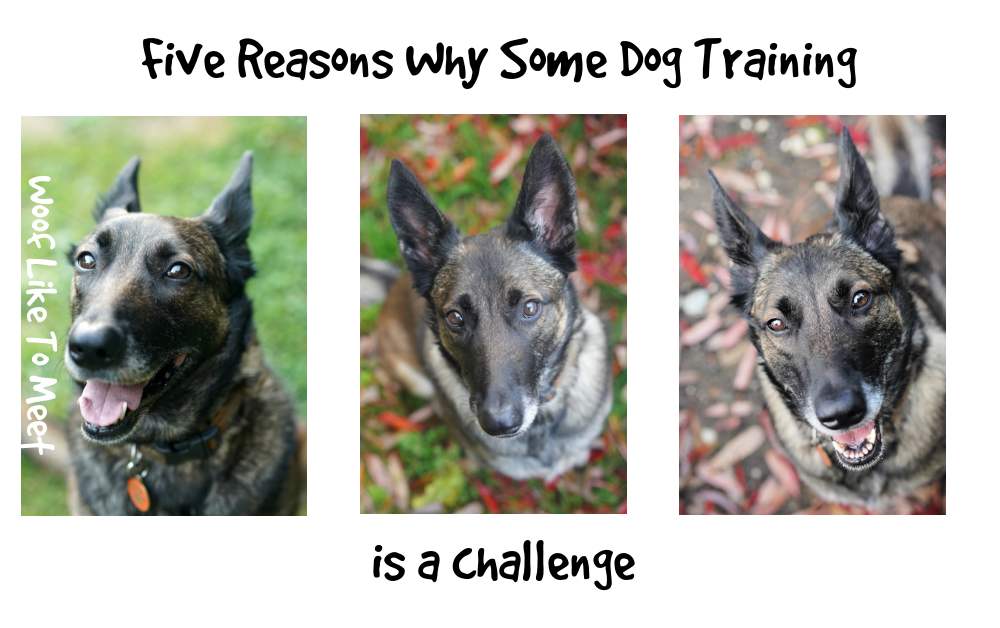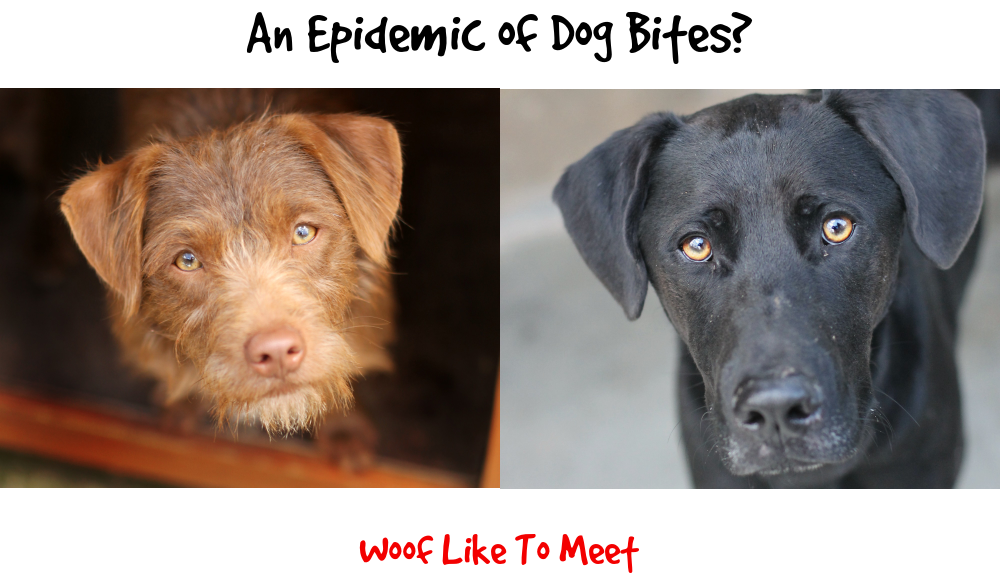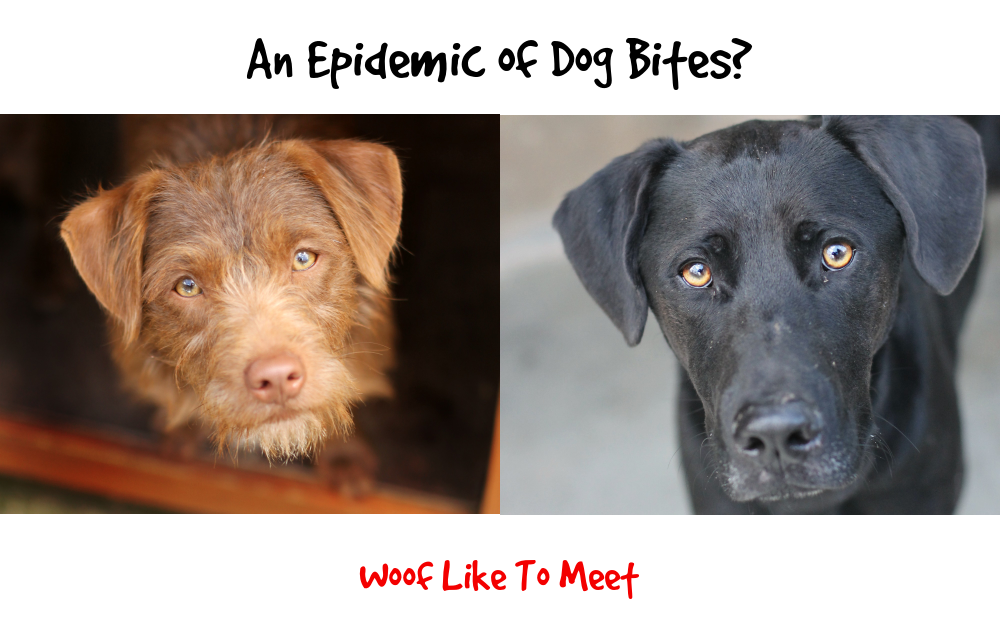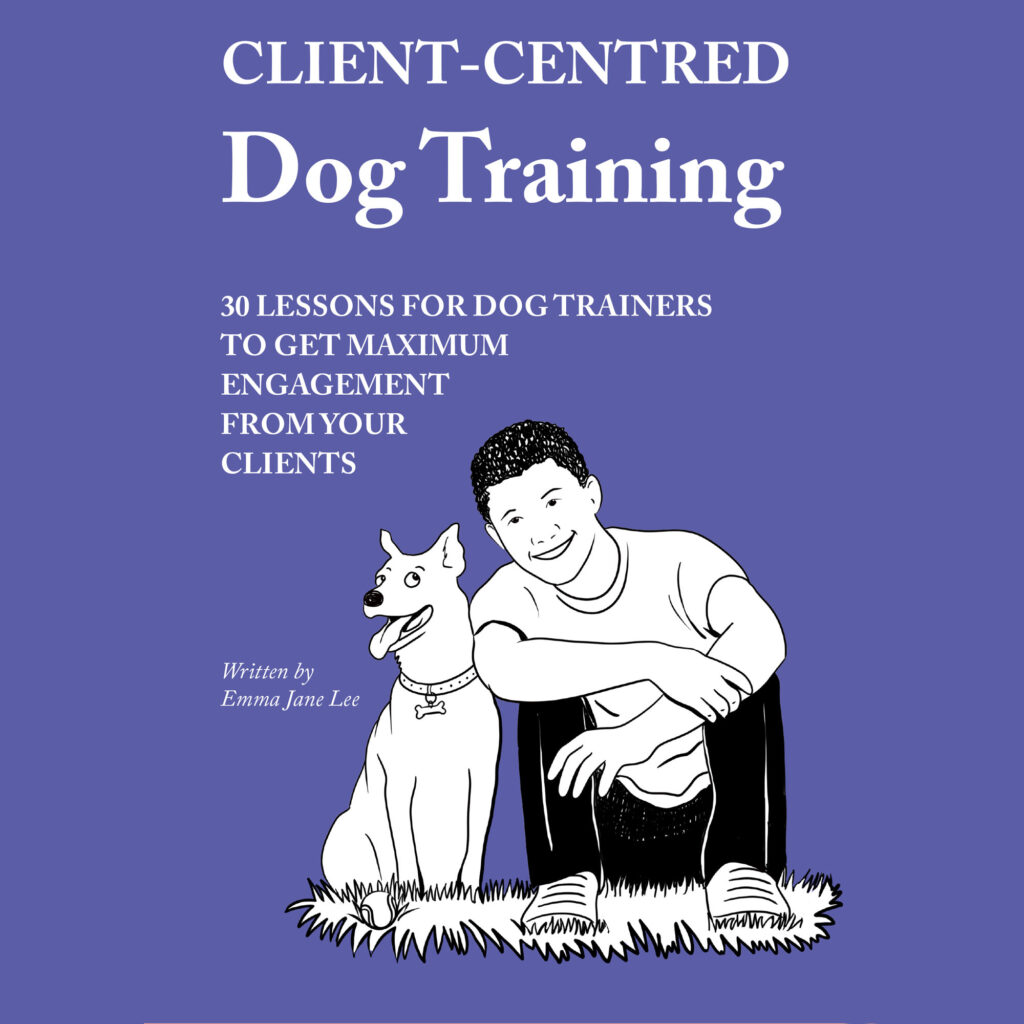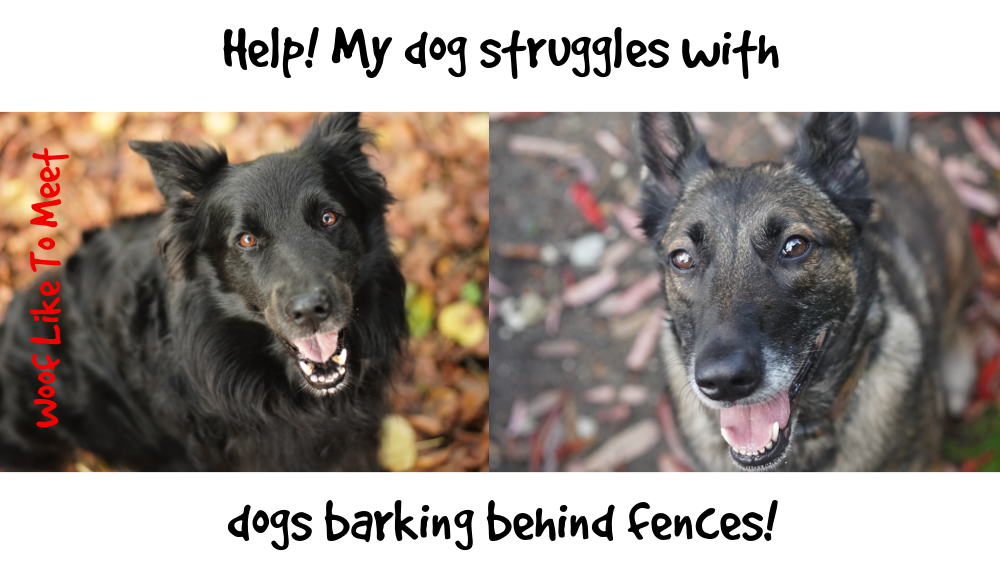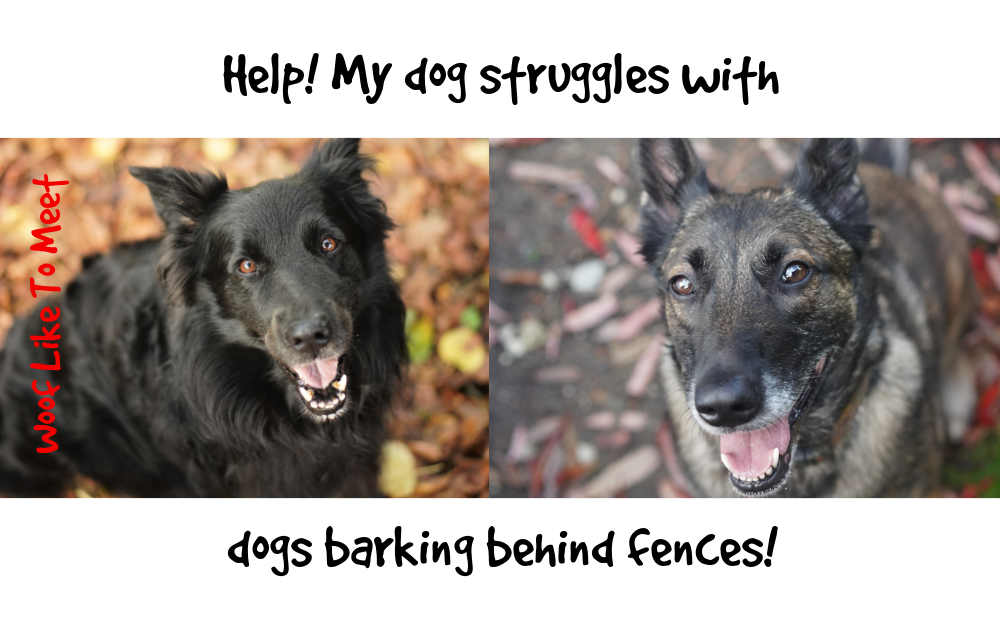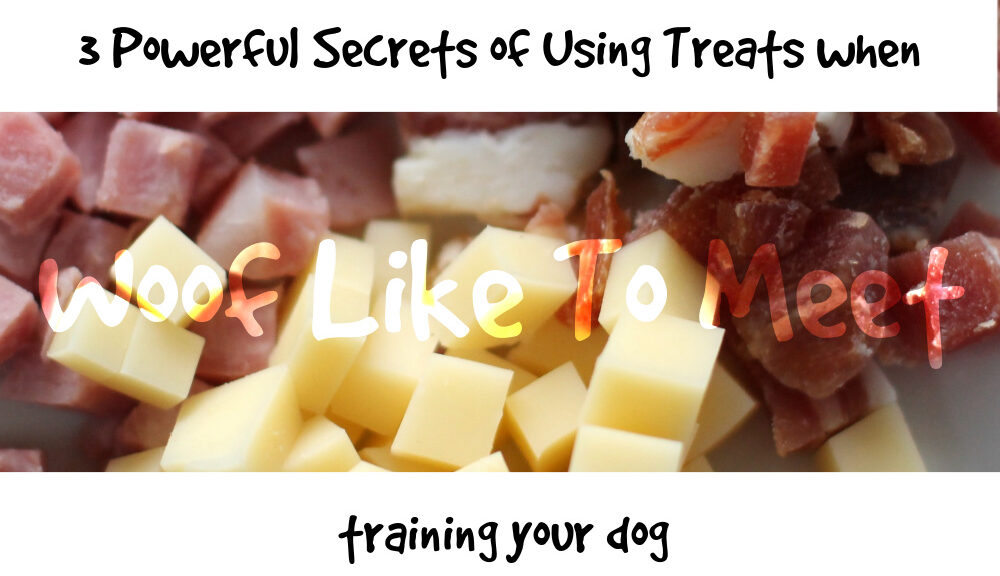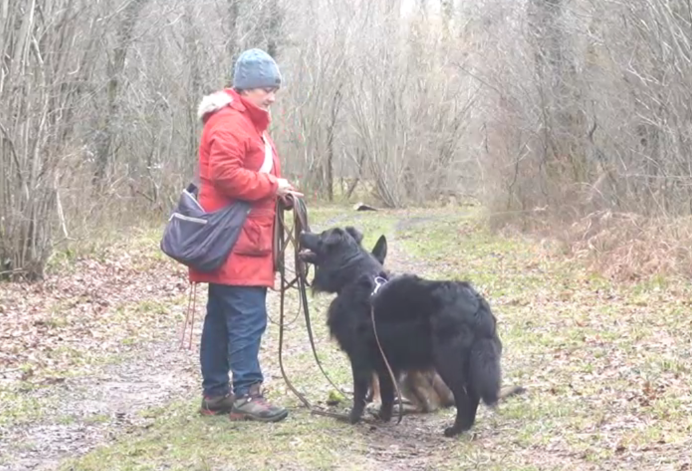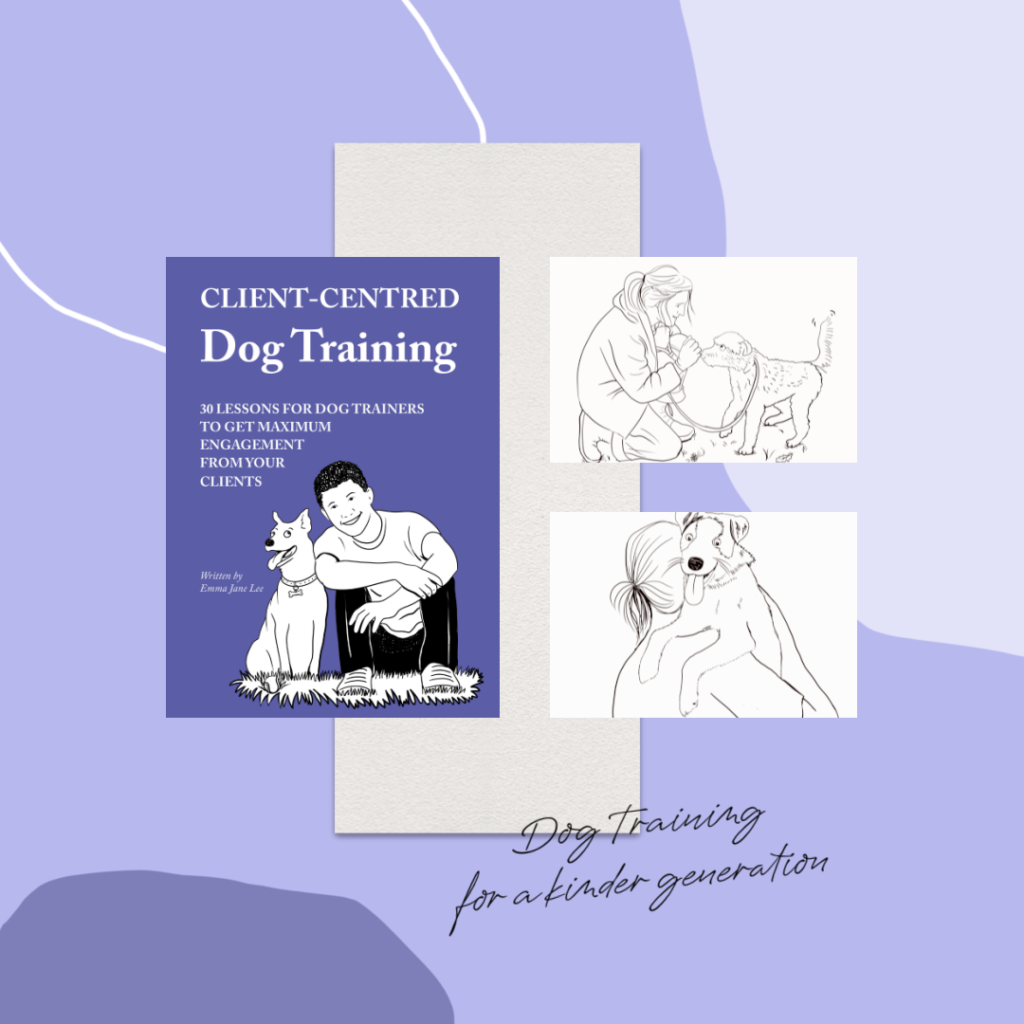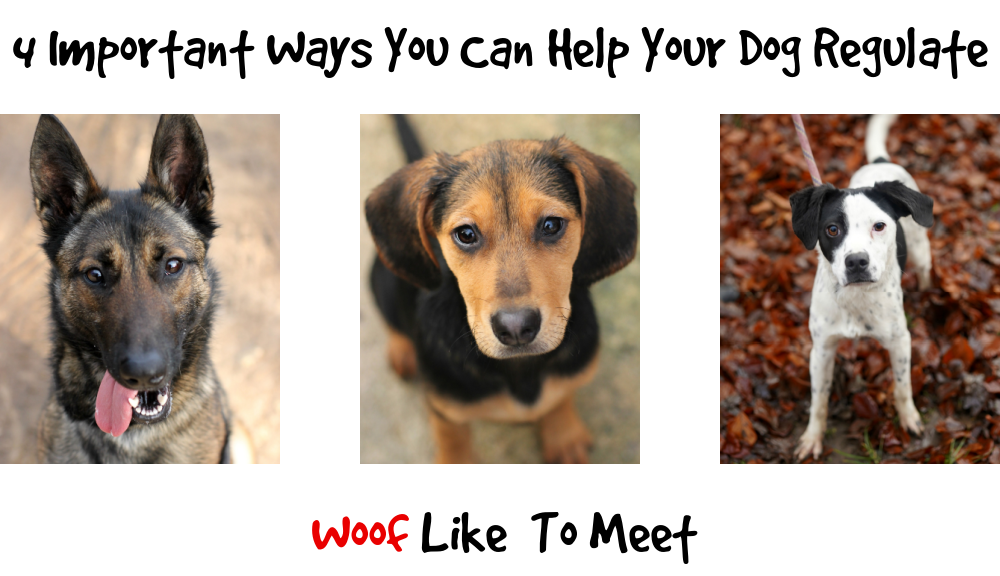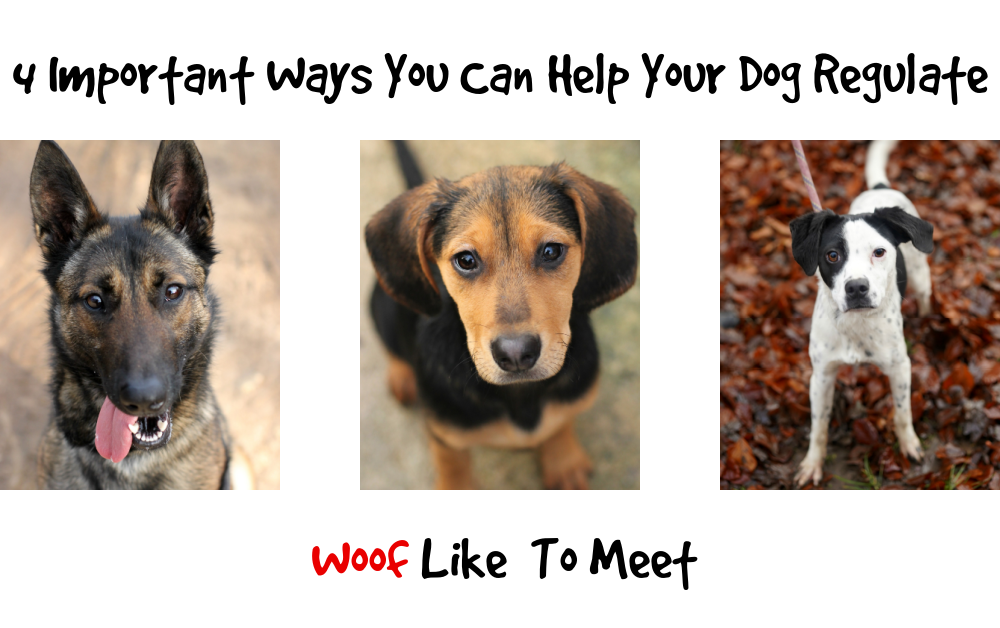A client asked me a really good question in the week.
Should she teach other behaviours when her dog hadn’t mastered the one she’d been working on yet?
And why was it so hard to teach when he’d learned other things in a snap?
We’ve been working on mat behaviours so that her dog knows what to do when people move about. He’s also been working on recall when he’s barking in the garden. My client wanted to know whether she should persevere with one when he’d not quite got the other.
My answer was yes. I don’t know why but it’s kind of a myth that dogs can only learn one thing at once. I remember doing one behaviour at a time with Heston when he was a puppy, as if he couldn’t possibly have coped with the confusion of more.
There are lots of reasons, though, why it takes dogs longer to learn some behaviours than others.
#1 The complexity of the behaviour
The more we ask, the more challenging it gets.
Complexity can be about how many components there are to the behaviour. It might have lots of bits that need to be added together. There might be more muscle groups involved, for example, or there might be more parts to what they need to do.
For instance, if you want your dog to recall from the fence, it needs your dog to listen to your cue, to disengage, to turn away and then to come back to you.
If you ask your dog to sit, it just needs them to listen to your cue and plonk their bum on the floor.
Complexity is not just about the number of components to the behaviour but also other factors too. It may require duration. The dog may be asked to do the behaviour for a long time, like walking to heel or walking on a loose lead.
Imagine that you’d asked your dog to sit for 40 minutes and you can begin to understand why asking them to walk to heel for 40 minutes can be such an issue. Some behaviours like a retrieve require your dog to have loads of skills such as following, finding, picking up and then holding an item, carrying an item and then coming back to you to return it and then dropping it. No wonder it’s hard! It has at least seven different components.
Solution: train each bit separately and build up duration through training.
#2 Asking dogs to make complex choices
Some behaviours are easy to teach because we’re not asking the dog to choose between two complex things.
Learning to sit for a biscuit is not that challenging when you’ve got a choice of standing about and getting nothing, or sitting and getting a biscuit.
Learning to recall is hard because they can involve two competing situations. Do I go and sniff? Do I come back?
It’s all about how valuable those two competing situations are. Is sniffing that important? What’s in it for the dog if they come back?
Everything we know about behaviour says that dogs do the thing that has been most rewarding and most rewarded in the past. Each choice of THIS or THAT involves subconscious processing about the desirability of what consequences there have been in the past.
Dogs probably aren’t involved in complex decision making where they’re actively and consciously weighing up the benefits of one action over another. It’s not like me in the grocery store with a five-pound note deciding which coffee will be a better choice. Should I go for flavour or quantity? What does £3.60 for 500g work out in comparison to £5 for 750g?
Even without this level of complex, active and conscious reflection, there are still calculations being performed. The answer is always the same: Dogs Do What Works, as educator Jean Donaldson would say. Or, Dogs Do What Worked More For Them In The Past And Is More Likely To Work To Get Their Needs Met Right Now.
Not as pithy, I admit.
But if the dog isn’t feeling particularly curious or in need of investigating smells and sniffs, calling them away to give them a treat is going to be less challenging than if they really, really, really want to get to that smell right now.
Take yesterday. 300 delegates in a room. Lunch the day before had been a long and arduous process and there hadn’t been enough food. Some people didn’t even get to eat and had to queue for 30 minutes even so.
What happened at 1.30? A huge rush to the buffet.
What if I’d called one of those hungry delegatess back to do paperwork?
Perhaps I’d have found that selective hearing we complain so much about in dogs…
There can be competition between two good results: do I sniff or do I come back for a biscuit?
There can also be competition between a good result and a bad result. Do I go sniff or do I go back and get my lead clipped on?
There can also be competition between two bad results. Do I stand at the fence shouting at this dog which feels bad or do I go back and get reprimanded by my guardian?
How does our behaviour choose?
Firstly, by doing the thing that is most rewarding or doing the thing that is least unpleasant.
Our behaviour also chooses by doing the thing that meets our needs in the moment.
Do you think there would have been such a rush to the buffet table yesterday if we weren’t so late for lunch?
And what about people like me who’d had too much coffee? Toilet first or food first?
We do the thing we need most, all things considered.
So do dogs.
The same is true of many canine behaviours. THIS or THAT? Walk on a loose lead or pull to get to a smell? Come back from shouting at the fence or stand there making a racket? Chase the pheasant or come back to my guardian. Drop the dead pigeon and get a biscuit or continue carrying it about?
Dogs Do What Worked More For Them In The Past And Is More Likely To Work To Get Their Needs Met Right Now. Remember that.
Solution: when you’re training a new behaviour, make sure there are as few competing choices as possible.
#3 Owners not being aware of choices
So often, we don’t even realise that our dogs HAVE a choice to make, let alone that they are making a difficult choice.
It doesn’t cross our tiny, selfish, egocentric minds that it MIGHT be more fun for a dog to sniff a crow feather than come back for praise.
Also, we don’t make it easy on the dog because we ask them to choose at the moment the choice is more difficult. We rarely ask them for loose lead or recall when the going is easy. We rarely reward them for these things when the going is easy. We ask when the going gets tough.
When did I ask for loose lead this morning? When my incredibly predatory cat-attacking dog had just seen a cat run behind a bush.
Many guardians are then despondent because we don’t think we can compete with the other choice. Loose lead or stalk cat? I mean, it’s like if someone asked me to do twenty burpees or eat cake. Literally it’s like that.
BUT we fail to understand that it’s not about the size of the potential reward but about the frequency the behaviour has been rewarded in the past.
Why did Lidy choose to walk to heel and eat biscuits instead of lunging at the cat this morning?
Because chasing cats is NEVER rewarding (because she’s always been controlled around cats with a lead for the last two years) and walking on a loose lead past distractions has been FREQUENTLY and HIGHLY rewarded in the past.
Because I know just how thrilling it would be to chase cats and because I have practised and practised, Lidy chose to walk nicely and to eat biscuits.
We need to understand that walking on a loose lead will never be as rewarding as chasing cats UNLESS… we make loose lead walking frequently rewarding and chasing cats never rewarding. That means management and paying out.
Sadly, many guardians seem to have a mental block on both. If chasing stuff is sometimes rewarding because they sometimes get to do it, and if loose lead walking is never really rewarding because we don’t pay out much, then we shouldn’t be surprised that our dogs will choose one very rewarding option over the other.
Solution: understand what your dog really wants and how that balances out with what is on offer.
#4 It involves significant cognitive processing
The more involved the dog is in doing whatever they are doing, the tougher it will be to ask them to remove their attention from it.
For instance, if they are very involved in following a scent trail, then asking them to come back to you needs them to be able to disengage as well as then choosing to do a less rewarding thing.
This involves significant cognitive processes. First, it requires them to have a brain that is ‘online’ for inhibition. That requires two components. They need to be at points in their development where that the bit of the brain that has oversight over inhibition is functional. If you’ve got a young puppy or a teenage dog, then that will be a significant challenge.
That point of development will also affect how much they want to do the other thing instead. Ask a human teenager to make a choice between a boring family occasion or going out with their mates, it’s a literal no-brainer for a teenager, whose brains at that period in their life are wired to be more stimulated by peer contact than familial contact. Stupidly, sexual maturity comes before social maturity in both dogs and humans, and therefore teenagers of both species are interested in non-familial interactions, not family ones.
To ask dogs to switch on the override switch at these times in their life is tough.
Likewise, inhibiting your own behaviour requires skills. Take people who are dieting, give them a hard sum, offer them the choice of an apple or a cake afterwards and watch their willpower crumble.
And that’s human beings, with their huge neo-cortexes and enhanced brain power for inhibition!
It requires practice.
Take for instance cars aquaplaning or going into a slide. It takes a lot of practice to do the opposite of what your basic, primitive brain is telling you to do. Your foot is telling you to brake and steer out of trouble, where your inhibition is telling you to simply ease up on the accelerator and hold back on steering out of danger. Often, we make situations worse because we have to have training to do the opposite of what we think we should do. Why do drunk people often not break hands and wrists when they fall, even if they would when sober? Because alcohol impairs your reflexes and inhibits your impulse to put your hands out.
Inhibiting the very thing a noisy, shouty part of our brain is telling us to do is very hard. It takes being at the right point in development and it also takes conscious, controlled practice.
Impulse control and inhibition are fundamental parts of why dogs will sometimes struggle to do one behaviour and not another. One behaviour simply needs less brainpower than the other.
Solution: stop expecting so much from puppies and teenage dogs, and set them up to succeed.
#5 Some behaviours meet needs more easily
I like trick training. I like cued training. I think it’s important that dogs respond to things we ask them to do. But we need to acknowledge that sitting for a biscuit doesn’t really meet any specific need.
Sure, it’s nice to get a biscuit or a treat. That’s great. But if it compares to ringing a bell to go out for a wee, well one of those behaviours will be easier to acquire because one meets a need. The dog needs a wee. They don’t need a biscuit.
In the past, this has led some trainers to deprive dogs of food in order to make them more motivated by food. Programmes like Nothing in Life is Free operate on this process, where unless the dog ‘works’ for their food, they don’t get anything. If we manipulate those things to train behaviours we want, like asking dogs for a sit-stay before they get fed, then we may find that they learn those behaviours more quickly because the stakes are high.
It can also make it very difficult for the dog to understand that they should still do the behaviour outside of that context. They may struggle for example to sit and stay when it’s not mealtimes.
Sadly, this then makes us think our dogs are stupid or stubborn, instead of understanding that we’d simply got a good behaviour because the dog needed what we were withholding more than at other times.
Often in behaviour work, the dog wasn’t doing anything for food in the first place. A dog barking at the neighbour’s dog is not doing it for Scooby snacks. A dog jumping up on guests isn’t doing it for food.
Thus, when we try to use food to teach different behaviours, it’s not so easy because the dog needs to do the other behaviour more but whatever we’re asking, not so much.
Solution: use what the dog really wants as a reinforcer, making sure you don’t deprive them of it.
Now put your knowledge into action
These five reasons can make training some behaviours much more complicated. Training behaviour is often simple in theory but much more complex in reality. Sure, it looks easy on paper, but a lot depends on what we’re asking dogs to do.
Most of the time, we don’t even have to think about why some behaviours are more challenging to teach. In fact, it can also work to our advantage where behaviour consultants are simply teaching guardians what the dog needs, then training the dog a behaviour that gets their needs met.
These five reasons can also be reasons why dogs sometimes fail to respond to our signals.
If you’re a dog trainer and you want better results from your clients, my 5-star book will give you a lift! It’s over on Amazon in e-book and paperback versions.
Don’t forget to subscribe if you’d like regular content:

